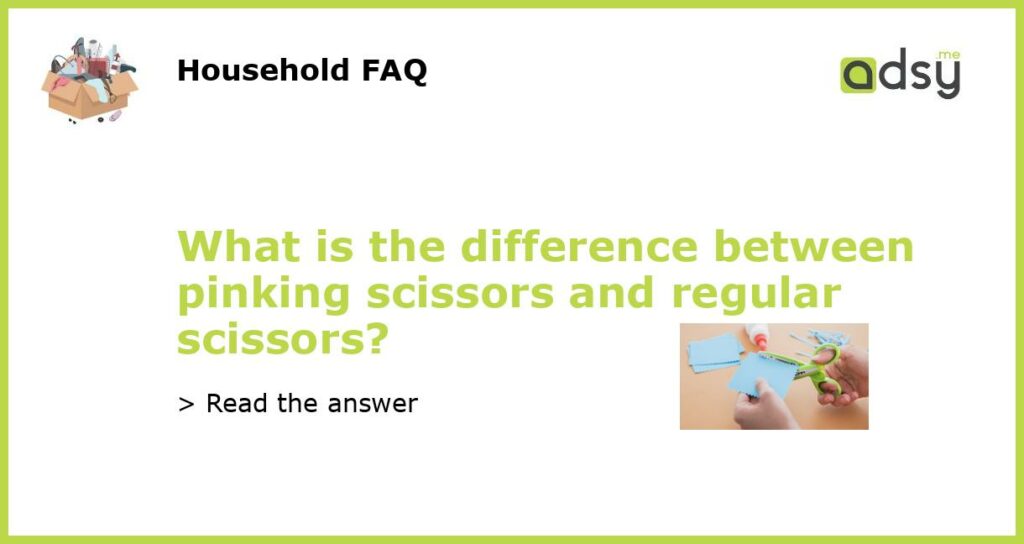Pinking Scissors vs Regular Scissors: Understanding the Difference
When it comes to cutting fabrics and other materials, there are various tools available to get the job done. Scissors are a common choice, but within the realm of scissors, there are different types designed for specific purposes. Two popular types of scissors, often used in sewing and crafting, are pinking scissors and regular scissors. While they may seem similar at first glance, there are some key differences between the two.
The Cutting Edge:
One of the main differences between pinking scissors and regular scissors lies in their cutting edge. Regular scissors have both blades with straight edges, meeting at a point. This design is suitable for most cutting tasks, but it can result in fraying when used on certain fabrics and materials. On the other hand, pinking scissors have a sawtooth cutting edge. This unique zigzag pattern creates small triangles along the fabric’s edge, preventing fraying to a certain extent. Pinking shears are particularly useful for cutting fabrics prone to fraying, such as linen, silk, or lightweight cotton.
Purpose and Applications:
Regular scissors are versatile cutting tools, suitable for everyday tasks like cutting paper, cardboard, or even hair. They are commonly found in households, offices, and classrooms. Pinking scissors, on the other hand, serve a more specific purpose in sewing and crafting. They are primarily used to finish fabric edges in a way that reduces fraying. This is especially helpful in sewing projects, where finished seams are desired for professional-looking results. Pinking scissors are also useful for decorative purposes, adding a unique edge to fabric pieces or paper crafts.
Design and Ergonomics:
In terms of design, pinking scissors differ from regular scissors in a few key ways. Pinking shears typically have longer blades than regular scissors, allowing for more precise and controlled cutting. They also come in various sizes, with some models incorporating additional features like cushioned handles for added comfort during prolonged use. Regular scissors, on the other hand, come in a wide range of designs and sizes, catering to different cutting needs and preferences. They may have curved blades, serrated edges, or even unique shapes for specific applications.
Maintenance and Care:
Maintaining and caring for pinking scissors also differs slightly from regular scissors. Pinking shears are typically used exclusively on fabric and should be kept sharp for optimal performance. They require special care, including occasional oiling and frequent cleaning, especially if used with adhesive materials like tape or glue. Regular scissors, meanwhile, can handle a wider variety of materials and may require different maintenance steps depending on their design. However, regardless of the type, it is generally good practice to keep scissors clean and sharp to ensure clean and precise cutting.
Cost and Availability:
The cost and availability of pinking scissors and regular scissors can vary. Regular scissors are widely available in different stores, from grocery stores to office supply shops, and come at various price points depending on the brand and quality. They are generally more affordable and accessible than pinking scissors. Pinking shears, on the other hand, may be harder to find in physical stores but can often be purchased online from sewing and crafting retailers. Their prices tend to be higher than regular scissors, reflecting their specialized design and intended use.






